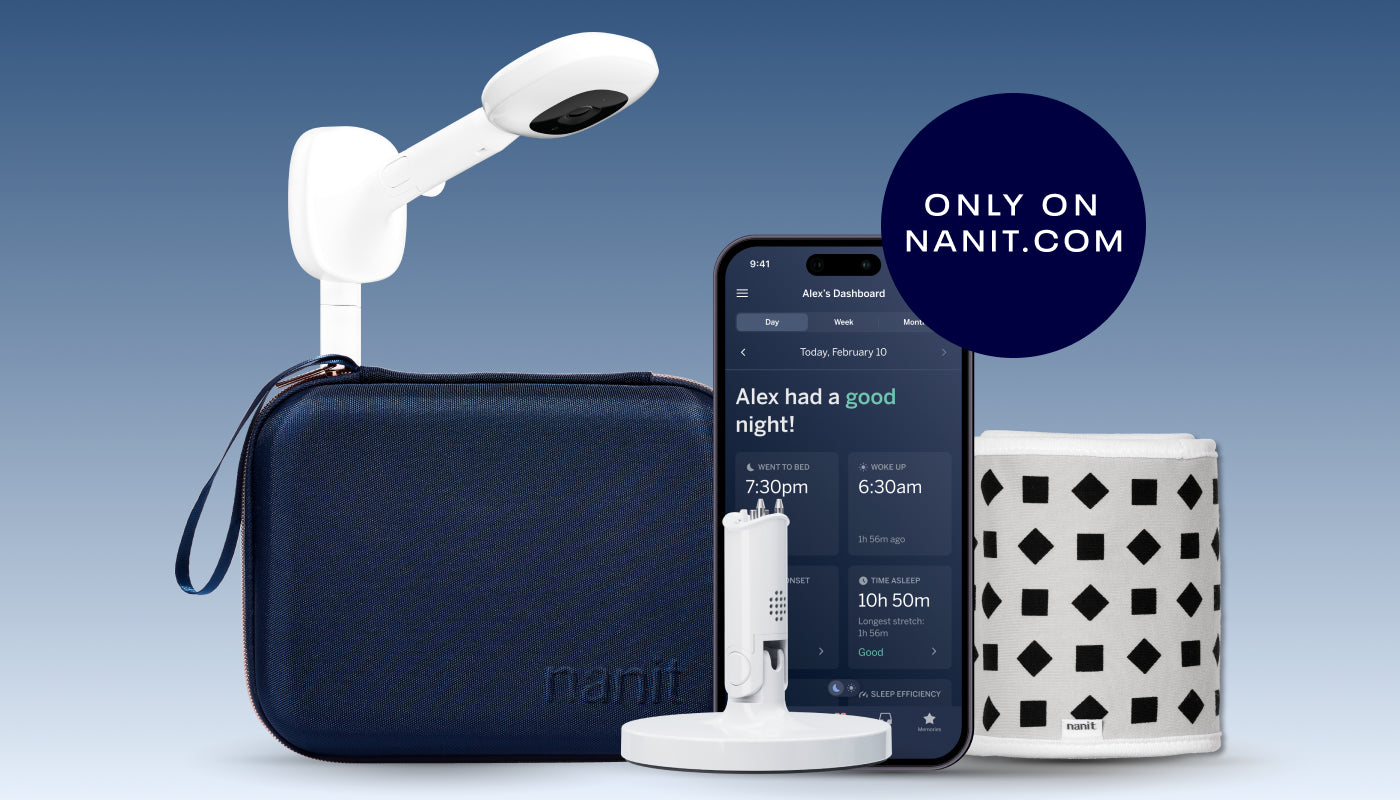Natalie Barnett, Assaf Glazer, Tor Ivry, Yena Lukac, Thomas Anders
Presented at the conference of the World Sleep Congress in Vancouver in September 2019
Introduction
The incidence of postpartum depression (PPD) in mothers has been well-studied. There has been less focus on the incidence of PPD in fathers. Many studies also show an association between disrupted infant sleep, reported by parents, and maternal PPD. No studies to date have objectively recorded sleep and demonstrated a relationship to PPD in fathers. The Nanit camera system uses computer vision algorithms to analyze real time video sleep recordings and parental interventions. It is a valid and reliable automated system. This pilot study was designed to examine correlations between infant sleep, parental interventions and PPD in males.
Methods
284 U.S. men (of 1,121 surveyed) with babies aged 3-6 months, all with female partners, were recruited from households using the Nanit infant sleep system. They completed the Edinburgh postnatal depression scale (EPDS), validated in men, and demographic questions. Their demographics and EPDS scores were compared to the video sleep metrics (total nighttime sleep, sleep onset, sleep efficiency, bedtime and wake up time) and parent interventions over two weeks.
Results
The average number of parental interventions per night for fathers with an EPDS score <6 was 1.98 (low EPDS group, n=161), the number of interventions for fathers with a score >10 was 3.0 (high EPDS group, n=41), and the number of interventions for fathers with an EPDS score >14 (very high EPDS group, n=11) was 4.4. The average total nighttime sleep of infants of fathers in the low EPDS group was 9.2 hours per night versus 9.1 hours in the high EPDS group and 9.0 hours in the very high EPDS group. These differences were non-significant. Similar trends were seen in bedtimes between groups, with the average bedtime for the low EPDS group being 7:50pm, 8:16pm for the high EPDS group and 8:34pm in the very high EPDS group. Average sleep onset times were 6.05 minutes, 4.87 minutes and 3.41 minutes, and average sleep efficiencies were 87%, 87% and 88% for the three groups respectively. There were no significant differences for any of the video-recorded sleep metrics, likely because of small group sizes.
Conclusions
The number of parental interventions were related to the EPDS scores. Couples, where the father had a low EPDS score, were half as likely to visit their infants at night than those with a very high EPDS score, suggesting that infant sleep interventions are related to the occurrence of postpartum depression in fathers. This is the first study to show objective video sleep and parent intervention data in relation to male postpartum depression. Limitations of the study were: small group sizes and interventions that were carried out by both mothers and fathers. Nevertheless, the larger number of interventions indicates that sleep disruption is associated with depression. Future studies should focus on sleep and mother-father-baby interactions to more fully understand the impact of male PPD.
About the researchers
The authors include Natalie Barnett, Assaf Glazer, Tor Ivry, Yena Lukac, Thomas Anders

- Dr. Natalie Barnett serves as VP of Clinical Research at Nanit. Natalie initiated sleep research collaborations at Nanit and in her current role, Natalie oversees collaborations with researchers at hospitals and universities around the world who use the Nanit camera to better understand pediatric sleep and leads the internal sleep and development research programs at Nanit. Natalie holds a Ph.D. in Genetics from the University of New England in Australia and a Postgraduate Certificate in Pediatric Sleep Science from the University of Western Australia. Natalie was an Assistant Professor in the Neurogenetics Unit at NYU School of Medicine prior to joining Nanit. Natalie is also the voice of Nanit's science-backed, personalized sleep tips delivered to users throughout their baby's first few years.
- Dr. Thomas Anders graduated from Stanford University (1956) and Stanford University School of Medicine (1960). He completed psychiatry and psychoanalytic training at Columbia Presbyterian Medical Center, NY. A two-year post-doctoral research fellowship preceded his appointment as Director of the Division of Child Psychiatry at SUNY/Buffalo. He also has headed Divisions of Child and Adolescent Psychiatry at Stanford (1974-1984) and Brown University (1985-1992). At UC Davis, he served as Department of Psychiatry Chair (1992-1998) and then as Executive Associate Dean (1998-2002). His long standing clinical and research interests are in the areas of maturation of infant sleep-wake states and pediatric sleep disorders in children with ASD. He has been an NIH funded investigator and served as President of the American Academy of Child and Adolescent Psychiatry (2005-2007).






























